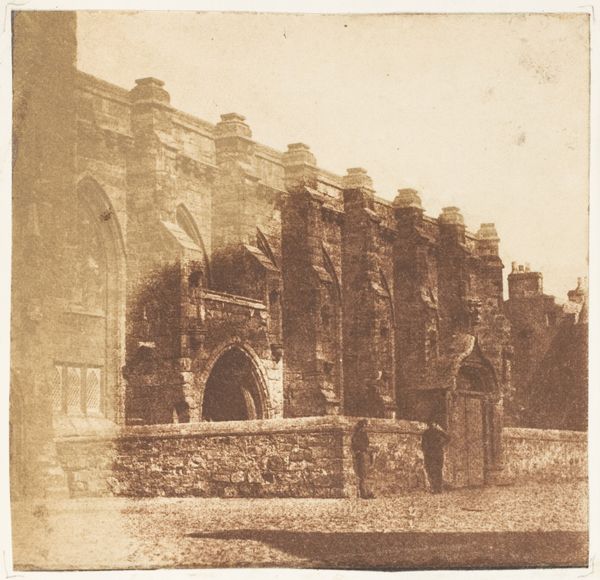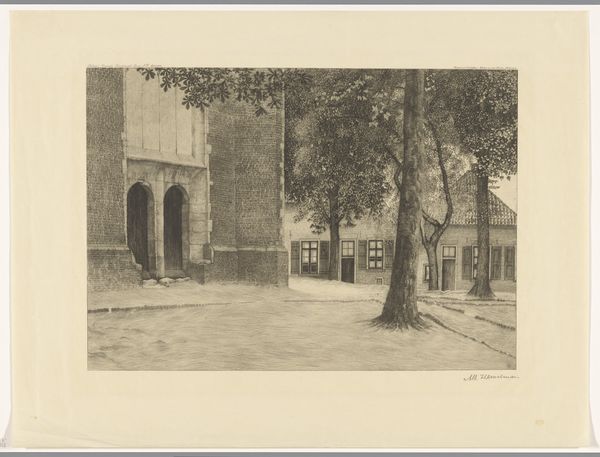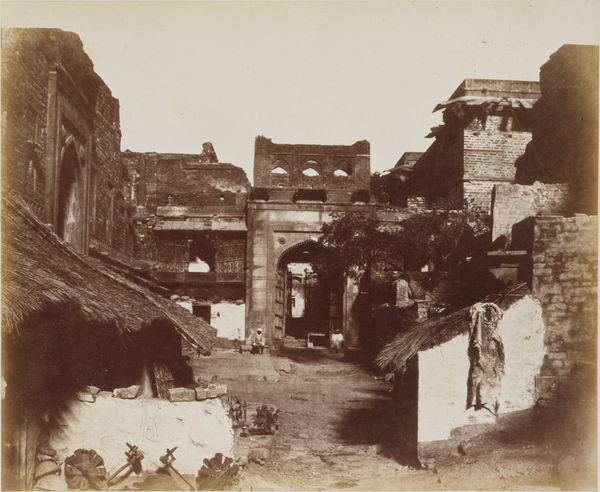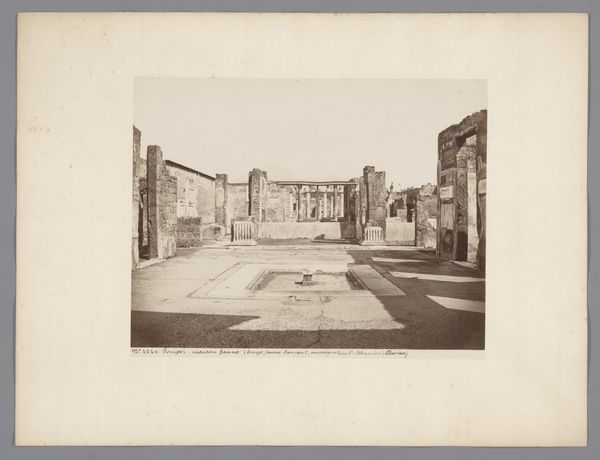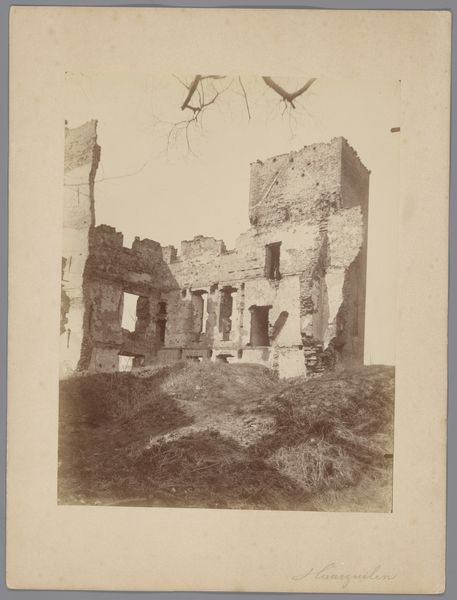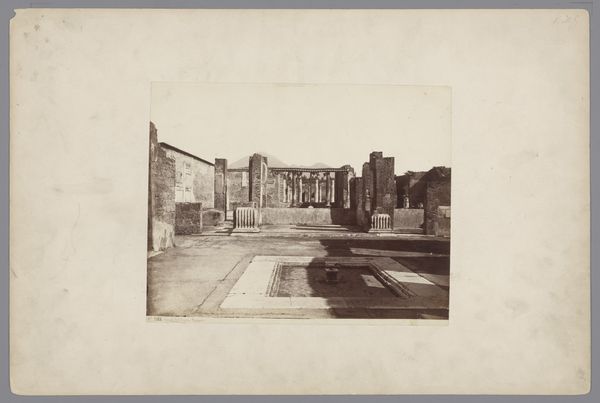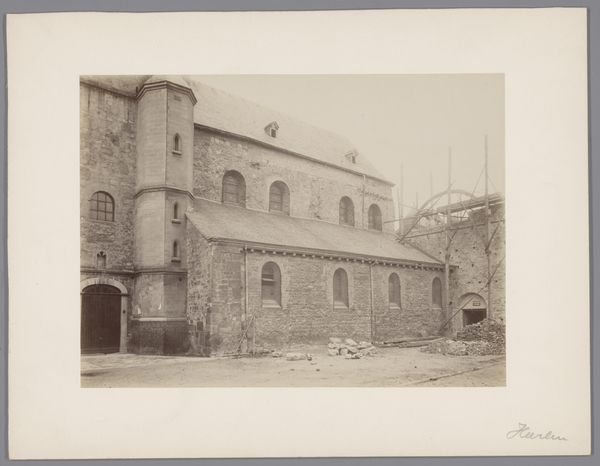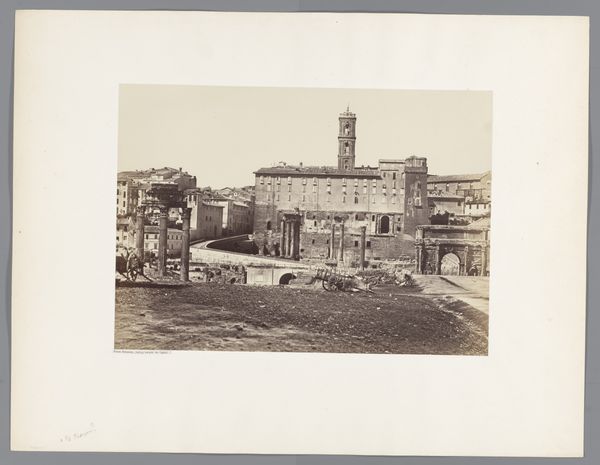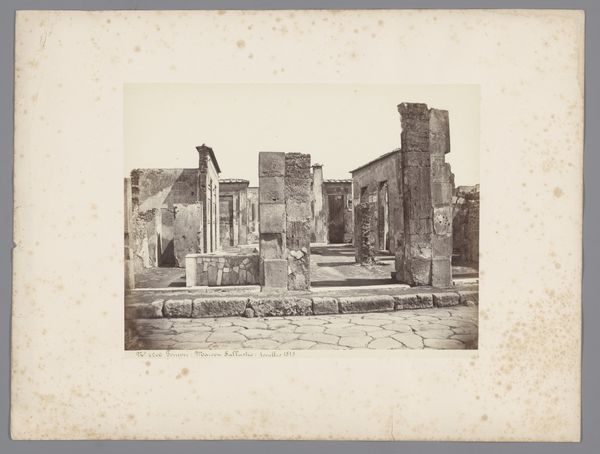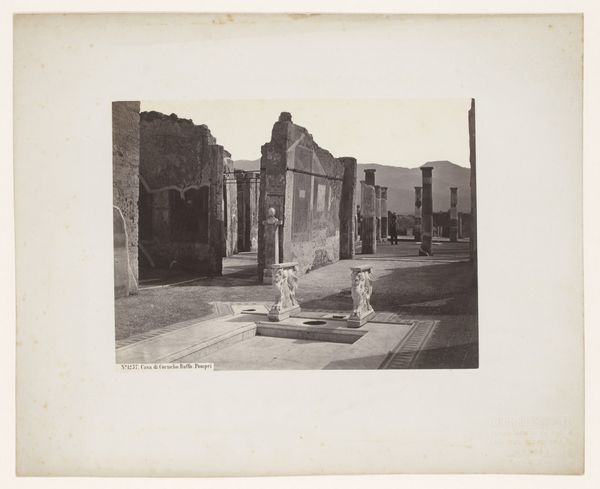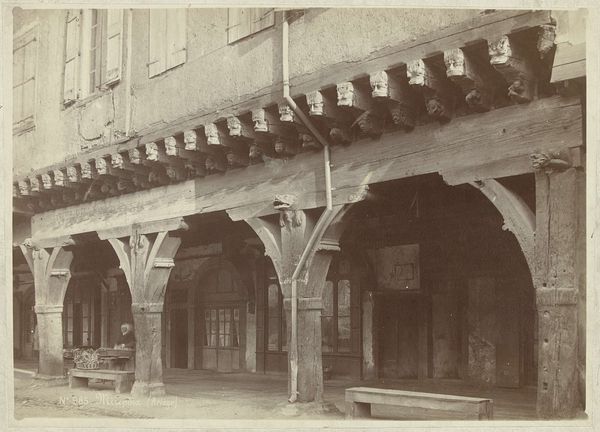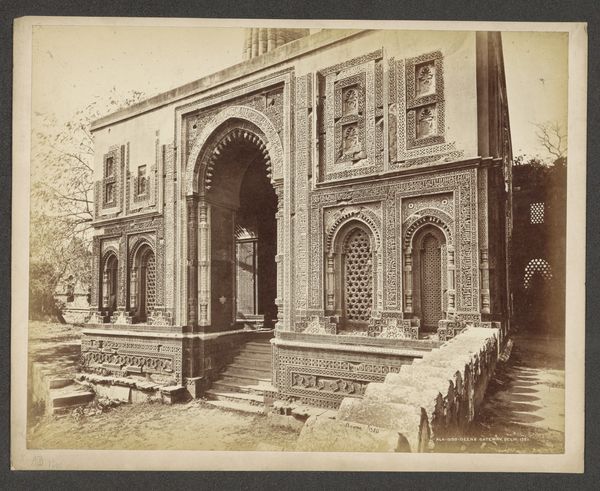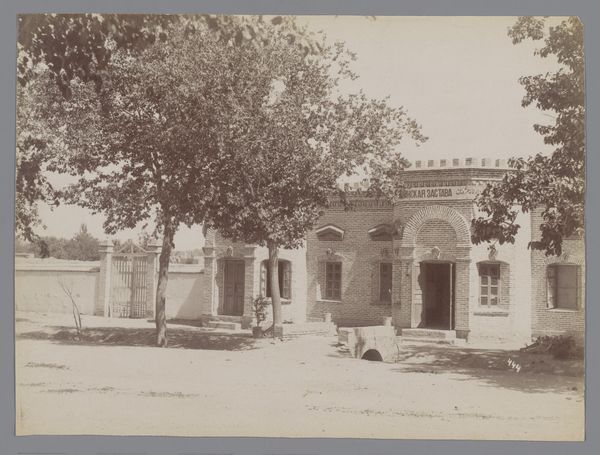
daguerreotype, photography, architecture
#
landscape
#
daguerreotype
#
photography
#
orientalism
#
monochrome photography
#
architecture
#
monochrome
Dimensions: 24.1 x 30.5 cm (9 1/2 x 12 in.)
Copyright: Public Domain
Curator: What a melancholic scene, almost dreamlike. Editor: It is evocative. This is "Boûlâk, Carrefour (Mosquée, Café, etc.)", a daguerreotype taken by Félix Teynard around 1851-1852. Boûlâk, a port city near Cairo, presents us with a cultural crossroads through Teynard’s lens. We see buildings with distinct architectural details: mosques, cafés and likely other establishments hinting at social dynamics during a time of increasing European influence. Curator: Crossroad is apt. Even without color, I see how distinct the building’s architecture is, with so many geometric patterns and forms stacked together. There’s a symbolic weight in the visual layering. Are we meant to understand how these elements and locations overlap? Editor: Absolutely. Daguerreotypes, especially in the context of early travel photography and Orientalism, were never objective. The technical limitations shaped their narratives. What does it mean to frame a seemingly neutral intersection through the lens of European sensibilities? Curator: This could reveal quite a bit, like the power dynamics inherent in that gaze, even if seemingly removed from them in reality. I find it interesting how a place ostensibly filled with public life seems utterly deserted. Editor: Precisely! In its stillness, the photograph invites us to consider absences. Think of the debates surrounding the ‘white gaze’ and photographic documentation. Did the lack of representation contribute towards creating a skewed perception, or even furthering stereotypes surrounding that region and culture? Curator: I see the seeds of future debate planted firmly in the photographic plate. So much is carried in the silence, not just in what is visible, but also in what is missing. Editor: Indeed, symbols persist, even in absentia. Considering this work prompts such critical dialogue, it remains powerfully resonant. Curator: It makes one question not just what we are seeing, but the motives and cultural lens through which we view it. Food for thought.
Comments
No comments
Be the first to comment and join the conversation on the ultimate creative platform.
